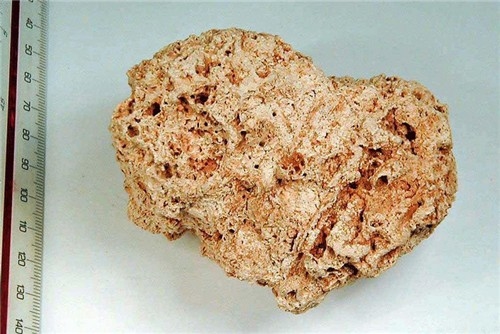Grejs klipper EarthCache
-
Difficulty:
-

-
Terrain:
-

Size:  (not chosen)
(not chosen)
Please note Use of geocaching.com services is subject to the terms and conditions
in our disclaimer.

Grejs klipper. The rock at Grejs
Sådan logger du en earthcache:
Send en mail til mig med svarene på de spørgsmål, der stilles FØR du logger cachen.
Du kan logge cachen som fundet umiddelbart efter du har mailet svarene. jeg kontakter dig, hvis svarene er forkerte.
Læs opgaven grundigt, så du er sikker på at du får alle oplysninger med. Dine svar må IKKE fremgå af selve logningen.
How to log an earthcache:
Send an email to me with the answers to the questions from the cachedescription BEFORE you log the cache as "found it".
You can log the cache as found imemdiately after you have mailed the a nswers. I will contact you if the answers are wrong.
Read the questions carefuly in order to get all the information you need. DON'T write the answers together with your log.
|
I Grejsdalen Nord for Vejle kan man se et lille klippestykke af frådsten. Frådsten eller kildekalk opstår fordi rødder, svampe, bakterier og andre levende organismer i jorden udskiller kuldioxid. Når regnvandet trænger ned i jorden vil det reagere med kuldioxiden og opløse jordens indhold af kalk. Den opløste kalk transporteres med det nedsivende vand, og hvor vandet så bryder frem på jordoverfladen som en kilde, sker der en afdampning af kuldioxiden til atmosfæren og kalken udfældes.Det er det samme princip når der dannes kedelsten i en kedel. I frisk og våd tilstand er stenen let at forarbejde, men når den bliver tør er den hård og vejrbestandig.
English:
In the Grejs Valley North of Vejle you can see a small rock of travertine. Travertine occurs because roots, mushrooms bacteria and other sorts of living organisms in the soil secretes carbon dioxide. When the rainwater leaks into the ground it will react with the carbon dioxide and dissolve the lime in the soil. The dissolved lime is being transported together with the leaking water. Where the water breaks up on the surface as a source an evaporation of the carbon dioxide into the atmosphere will take place and the lime stone will precipitate. It is the same thing that happens with incrustation. When the travertine is fresh and wet it is easy to work with. But as it dries up it becomes hard and weatherproof.

Et stykke kildekalk. A piece of travertine
På grund af kildekalkens egenskaber blev frådsten ofte anvendt til byggemateriale i nogle af de ældste Kirker i Danmark, især i Østjylland (se Vor Frue Kirke, Århus) og omkring Roskilde Fjord. Omkring Elverdammen ved Roskilde findes kalkstensaflejringerne også som søaflejringer (søkalk). Frådsten blev også brugt til fremstilling af mørtel. Kirken i Grejs var oprindeligt bygget af netop frådsten. I den nuværende Grejs kirke er alterbordet bygget af kildekalk fra den gamle middelalderkirke. Alteret blev bygget i 1953.
English:
Because of the qualities of the travertine it was often used as a building material in some of the oldest churches in Denmark. Especially in the Eastern part of Jutland (Vor Frue church, Aarhus) and around Roskilde Inlet. Around the Elverdammen at Roskilde you will also find travertine deposits in the lake. Travertine was also used for mortar. The old church in Grejs was originally built of travertine. In the present church the altar table is made of travertine from the old church. The altar table was built in 1953.

Alteret i Grejs Kirke. The Altar table in Grejs Church
For at logge denne eartcache som fundet skal du besvare følgende sprøgsmål:
A) Der er nogle store huller i klippen. Er nogle af disse huller gennemgående? Det vil sige ikke kun fordybninger, så man kan se igennem fra den ene side til den anden. Husk at tjekke på begge ledder.
B)Hvor høj og bred er klippestykket i meter ca.?
C) Hvorfor kaldes kildekalk også frådkalk? Se infoskiltet!
D) Frivilligt: Upload et foto af dig selv foran klippen.
Send svarene i en mail til mig via min profil. Du er velkommen til at logge med det samme. Jeg kontakter dig, hvis svarene ikke er tilfredsstillende.
Den som først sender mig en korrekt besvarelse er FTF
English:
To log this earthcache as found the following questions must be answered:
A) You will find some deep holes/hollows in the rock. Are any of them throughout?
B) Estimate the hight and the widht of the rock
C) On the information board you will find an explanation of the Danish word "frådkalk". copy the text (take a photo and translate via Google) and see if you can find the solution. Just focuse on sentences where the specific word "frådkalk" is mentioned. Please ask for help if it is to confusing. The explanation is the answer to question C.
D) Optional: upload a picture of yourself in front of the rock. Send a mail with the answers to me via my profile. Please log in advance. In case of wrong answers I will contact you.
Tillykke til erhansen der blev FTF 
Additional Hints
(No hints available.)